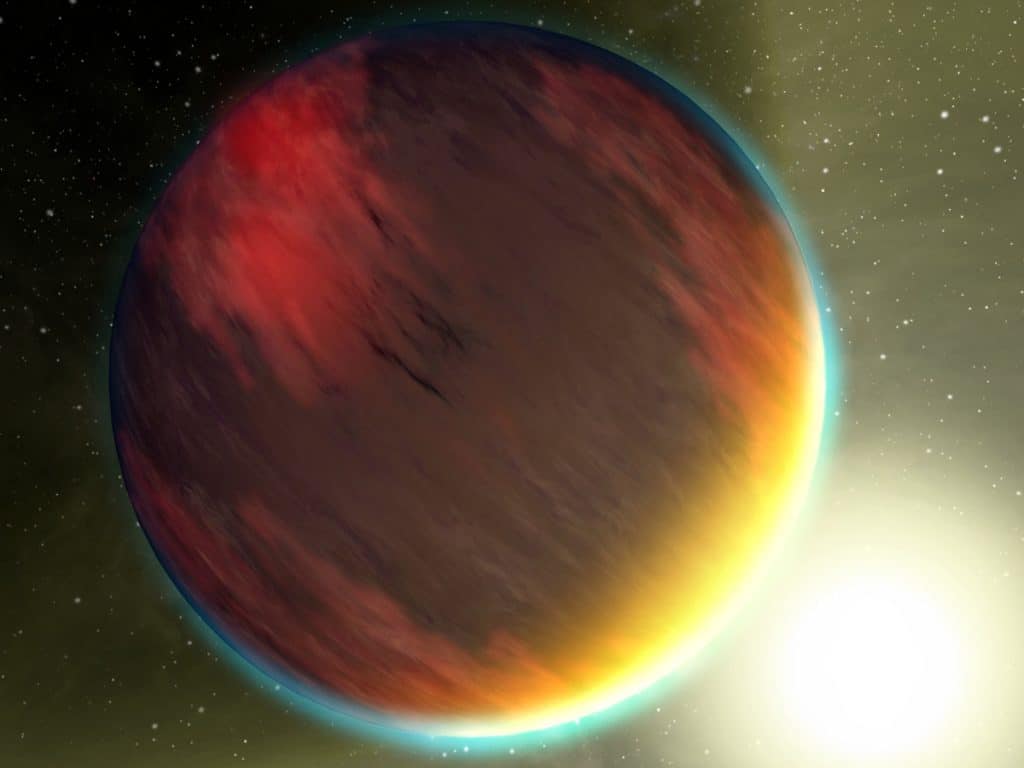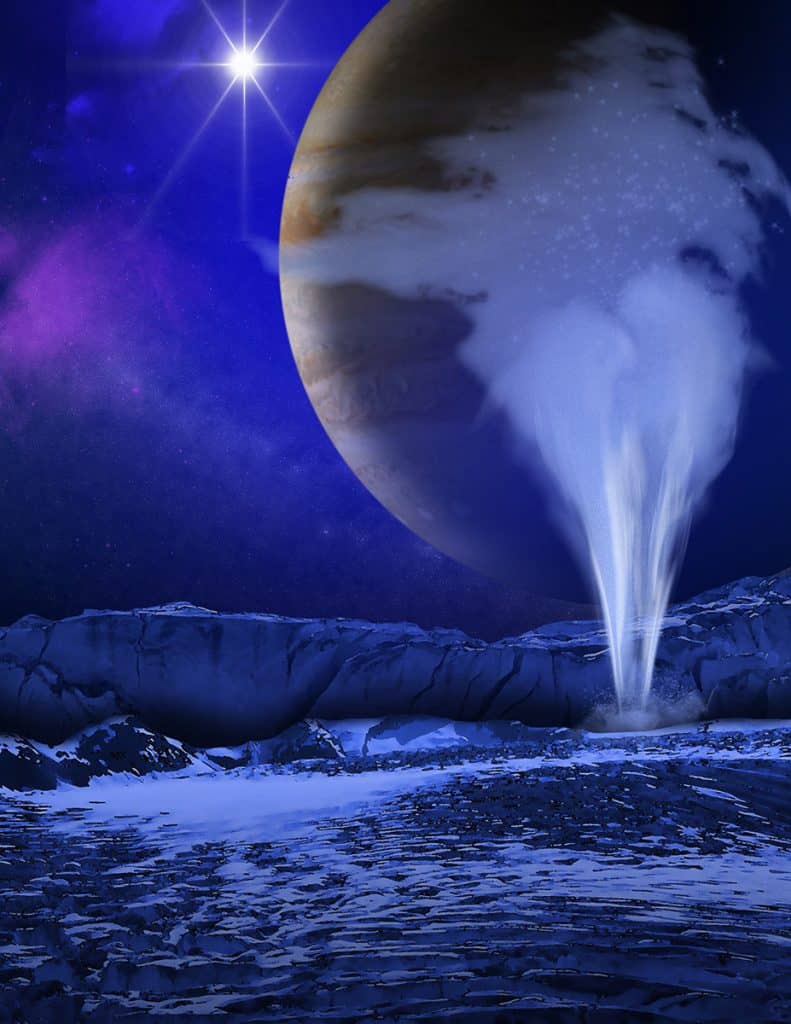by Hilding Neilson
The night sky offers a majestic view, filled with millions of tiny lights, each from a distant star. Throughout our galaxy, there are billions of stars, each orbiting the centre of the galaxy, each emitting its own light and sharing its own story. As far as scientists can tell, our Sun is not a particularly special star, yet it is the only star we know of that hosts life. But, that view is changing. Thanks to satellite missions, like the Kepler Space Telescope and the Transiting Exoplanet Space Satellite, astronomers now know of thousands of planets that orbit other stars. Across the galaxy, exoplanets appear common.

While there are a lot of exoplanets, we still don’t know how many, if any, support life as we know it. But, the search for life and intelligent life began long before we knew about those exoplanets. More than 50 years ago, this search began with the growth of radio astronomy—the study of the universe via long-wavelength radio waves. We see only a small fraction of light with our eyes, but telescopes observe X-rays, and ultraviolet, infrared, and radio light in the sky. In the 1950s, humans were broadcasting television and radio signals to homes around the world and soon realized that those signals were being broadcast into space too. Since the broadcasts travel at the speed of light, by today, those radio signals have reached potentially hundreds of nearby stars. However, at those distances, the signals are very weak, in the same way a wifi connection gets weaker as you get farther from the source.
This realization led to a question: What if beings on other worlds emit radio signals? Could we detect them? If so, how many might there be? In 1958, Professor Frank Drake devised a thought experiment to try to understand the issues around the search for extraterrestrial intelligence (SETI). We know there are hundreds of billions of stars in the Milky Way galaxy and, in Dr. Drake’s time, astronomers only knew about planets in our Solar System and life on planet Earth. So, with very little information, he developed the Drake equation to calculate the number of advanced civilizations in our galaxy, which is:
N = R* x N_p x N_h x N_l x N_i x N_c x L
This is a big equation, but one way to look at it is like a nesting doll. This is a doll within a doll within a doll and so on. On the outside lies the largest doll, which is the number of stars in the Milky Way at any time—but stars are born and die constantly. What we really need to know is how often stars are born. In our galaxy, the equivalent of about three stars like our Sun are born every year, so at any time, we can estimate there are about one hundred billion stars in our galaxy. That’s R*.
The second layer, N_p, is the percentage number of stars that can have planets. In Drake’s time, we only knew of one star, our Sun, that could host planets but, thanks to recent missions, we’re pretty sure that about 20 per cent of stars host planets. The next layer, N_h, asks: Of all of these planets, how many have the ability to host life in any way? Looking around in our Solar System, astronomers are pretty sure that Mercury cannot host life; neither can the gas and ice giants like Jupiter and Uranus. Scientists have speculated about microbial life on Venus and there is evidence Mars may have once hosted life—and may still do so today. So, we can guess that perhaps two to three planets per host star have the potential to host life. Of course, we haven’t even mentioned the idea of life on moons of planets, like the ice moons, Europa and Ganymede, or on Titan. The reality is that scientists don’t really even know this number.
We have the same problem for the next layer, N_l, which represents planets that could host life and will go on to do so. In our Solar System, we really only know of one such planet, so at best, there are one in three planets that do support life—or that number might be one in a hundred because, again, scientists just don’t have enough information. The next step, N_i, is for the planets that do host life and how many will have intelligent life—whatever “intelligent life” is defined as—possibly the ability of a species to communicate, or self-awareness, and so on. In Dr. Drake’s time, however, intelligent life meant humans. In that case, the number is maybe 1 in 10, or 1 in 100, or 1 in 1,000,000. We simply don’t know.
If a planet hosts intelligent life, what are the chances that “civilizations” capable of interstellar communication will arise? That question is N_c. Again, we only know that humans are capable of such communication through radio transmissions. There could be many other ways for life in the galaxy to make itself known, but in Dr. Drake’s time, there was only radio communication. In this case, we have the same issue: it could be 1 in 10 or 1 in 1,000,000.
The final layer asks how long these civilizations last. Civilizations can end because of asteroid impacts, like the one that led to the extinction of the dinosaurs here on Earth, or war—a prime concern in Dr. Drake’s time. Today, we fear runaway climate change could end human civilization. This length of time could also relate to how long civilizations broadcast detectable signals into space. Again, we don’t know—the timescale could be 100 years or 1,000,000 years. Most scientists tend to think the number is closer to 100 years.

As we can see, there are a lot of unknowns when we ask about alien life in our galaxy—and there are a lot of things to explore. However, one thing we can see is that our view of this equation is based on our understanding of humanity and life on Earth. More than that, Dr. Drake assumed that “civilization” meant the specific technology of the Western world and that “intelligent life” meant humanity. From that viewpoint, scientists predict only about ten or so civilizations. But, that is not the only perspective. We live in a land where Indigenous Peoples have been around since time immemorial and every First Nations and Inuit community has its own views of the universe and nature. These views are not necessarily the same as those of Western science, nor is it necessarily true that different First Nations and Inuit perspectives even align with each other. But, different Indigenous knowledge can tell us a lot about nature, the world, and the universe.
When we ask about life in our galaxy, we can look to Indigenous knowledge and find a completely different view, particularly about what it means to have intelligent life, as well as the length of time for which civilizations exist.
These are difficult questions. NASA defines life as something that undergoes Darwinian evolution; that is, life is something that adapts to its surroundings over many generations through evolution. Even though this is a very broad definition, for many Indigenous Peoples, life is defined by relationships; be they our relationships with bears, salmon, moose, or with plants like sage, dandelion, or pine. It is also defined by our relationships with the land itself, and the air and the water. Does this mean land is a life form as well? In some respects, the answer is yes. In 2017, the Whanganui Māori in New Zealand fought and won a court case through which they received the recognition of human rights for the Whanganui River. In the territories known as Canada and the United States, many Indigenous Nations fight, as their protectors, for the rights of water and land. If we define life by its relationships with its surroundings, Indigenous knowledge accounts for Darwinian evolution and potentially more. We cannot say whether this would mean the number of planets that can support life and have life would be much greater, but is, at least, the number as suggested by NASA.
When we ask about intelligent life, the results might be very different. In Western astronomy, we assume “intelligent life” really means “humanity” because no other life on Earth creates technologies like humans do. But, Indigenous nations tend to live in good relations with nature, and respect animals and planets as equal to humanity. Indigenous Peoples tend not to define intelligence in other species, but consider intelligence intrinsic to species, whether it is the social nature of wolves, the use of tools by crows, and so on. This occurs more in Indigenous cultures because people are not above the animals and the plants and live in relation with each other. Since humans are not above the natural world, then we can think intelligent life is common and not rare, as it is defined by Western science.
The greatest difference might lie in how we view what a civilization is. In Western science, we would call a civilization the group or culture that is more advanced than other nearby groups. For the Drake equation, we consider the Western world with its technology, internet, radio telescopes, billboards, light pollution, etc., to be the civilization. But, this is also a narrow definition. The Mi’kmaw, Ininiw, Inuit, Salish, and others are all civilizations. Instead of just one civilization on Earth, Indigenous nations and cultures are also civilizations.
Similarly, how long do civilizations last? Again, scientists only know about us and the current civilization that is still here. Dr. Drake and others suggested that, for the purpose of detecting aliens, our civilization began in the 1950s with radio telescopes and TV signals. He also guessed that our civilization might only have this capability for about a century, either because humanity would move on from that radio technology or humans might be destroyed. Today, astronomers use telescopes to search for life, along with other methods, so we are not reliant on just one option. Even though we are still searching, it’s more than possible that aliens could be searching for us too.
Aliens could have many more methods and tools to find us. They could have been searching for a lot longer than a century, like us, and might have achieved that capability long ago. And if they did, they likely would have detected Indigenous civilizations. Many First Nation Peoples would say they have been here since time immemorial, but archaeological evidence shows First Nation peoples have been in the Americas for more than 20,000 years.

In these four different layers, we see that there are a lot of differences between Indigenous and Western knowledge. Through a Western lens, the Drake equation would suggest there are very few civilizations in the galaxy, whereas, through an Indigenous lens, there could be tens or hundreds of thousands more civilizations in our galaxy. That is, through an Indigenous lens, the galaxy is teeming with civilizations. This is important because when we explore the Drake equation, there are so many things we don’t have a good understanding of, so our view of life in the galaxy is a reflection of whatever lens we are looking through. If we only consider the Western perspective, then our search for extraterrestrial intelligence is simply looking for ourselves: a society that creates pollution and climate change, a society that is expansionist. That is a narrow view when so many other civilizations on Earth have lived in balance with and in support of nature, but the Drake equation would not predict that.
What is even more interesting is that having a lot of civilizations in our galaxy is a more hopeful prediction that we are not alone and that we are part of a galactic ecosystem. It is inspiring, as a scientist, to explore and search for planets orbiting other stars and wondering if we are seeing an empty planet or a living planet. We can learn from Indigenous perspectives, combined with the Western concept of the Drake equation, to see a galaxy rich in life that is much more diverse. Perhaps, a galaxy that is entirely Indigenous.
[buzzsprout episode=’10834825′ player=’true’]

